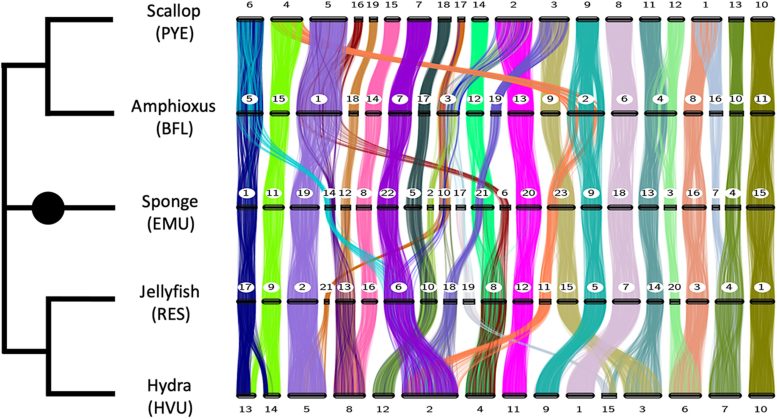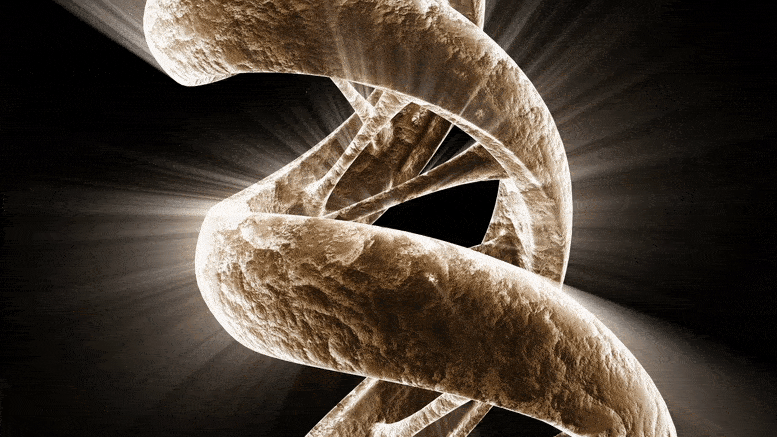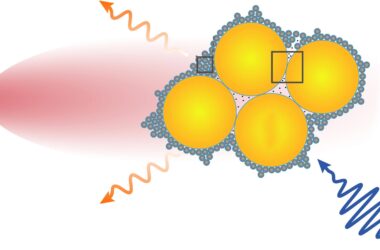Par
- Les scientifiques ont révélé que les génomes des invertébrés marins ont été étonnamment stables à travers les temps profonds.
- Au cours de millions d’années, des mutations aléatoires provoquent la réorganisation de sections de chromosomes et, dans certains cas, leur fusion et leur mélange, ce qui entraîne des différences dans les génomes entre les espèces.
- Dans cette étude, les génomes d’espèces de trois vastes groupes – éponges, cnidaires et bilatériens – ont été comparés, révélant qu’ils sont remarquablement similaires.
- Chez une variété de mollusques, les chercheurs ont découvert que quatre ensembles de gènes s’étaient mélangés et que ces mélanges étaient si anciens qu’ils devaient être partagés par tous les mollusques et autres espèces apparentées.
- Au total, les chercheurs ont identifié 29 segments ancestraux de chromosomes et ont découvert que certains de ces segments étaient présents il y a 800 à 900 millions d’années, avant l’existence des animaux, lorsque toute vie était sous forme unicellulaire ou multicellulaire très simple.
Les scientifiques ont découvert que les génomes des invertébrés marins ont été étonnamment stables à travers les temps profonds. Publié dans Science Advancescette nouvelle étude fournit une analyse globale de groupes d’animaux très éloignés les uns des autres, notamment les éponges, les méduses, les coquilles Saint-Jacques et les invertébrés les plus proches de l’homme, et a révélé que leurs chromosomes sont remarquablement similaires.
Pensez au génome comme à un manuel d’instructions situé dans chaque cellule et écrit en DNA code. It contains all the inherited information for the operation of an organism. This instruction manual is divided into chapters—the chromosomes—and those are, in turn, further subdivided into pages—the genes.

The numbered horizontal bars represent the chromosomes of five species. Each colored strip shows how different sections of gene groups correspond or vary in their location within the different genomes. Two or more colors converging on a chromosome (as can be seen four times with the scallop) indicate that mixing has occurred between two ancestral chromosomes or chromosome sections. Credit: The image appeared in the publication in Science Advances.
“Over deep time—and by that, I mean at least 550 million years—due to random mutations, the order of genes within chromosomes become scrambled, kind of like mixing up pages within a chapter of a book. And more dramatically, sometimes we find that two chromosomes have come together and become mixed, as if the chapters were merged and shuffled.” explained Prof. Daniel Rokhsar, last author of the paper and principal investigator of the Molecular Genetics Unit at the Okinawa Institute of Science and Technology Graduate University (OIST) in Japan. “But overall, we found a remarkable amount of stability. Even though the last common ancestor of these three groups lived over half a billion years ago, many of their chromosomes are recognizably similar in the sense that they contain the same groups of genes.”
The study compared the genomes of species from the three vast groups—sponges (very simple animals with no muscles or nerves), cnidarians (specifically jellyfish and hydra), and bilaterians (scallops and amphioxus). These genomes had either been previously sequenced or were first reported in this study. Although many of these organisms had had “draft” versions of their genomes sequenced before, this early research fell short of being able to study overall chromosomal organization. Now, with advancements in genetic technology, researchers are able to put the puzzles together and compare the way genes are organized into the long threads. In this study, the chromosomes of the hydra were, for the first time, reconstructed, those of the amphioxus were vastly improved, and a wide-ranging comparative analysis was completed.
The international group of researchers, which included scientists from OIST, University of Vienna, the University of California campuses at Berkeley, Irvine, and Santa Cruz, Ludwig Maximilian University of Munich, and University College, London, found striking similarities between the chromosomes of the five different animals, and confirmed that these similarities were also present in other animal genomes. In some cases, they identified patterns of chromosomal fusion that were specific to certain sub-groups of animals. For example, the researchers found four ancient fusions shared by scallops and several other mollusks, which also resembled a fusion in the draft genome of a marine worm.
“We see that genes can be on the same chromosome in different species but often in a different order,” explained Prof. Rokhsar. “In rare cases where two chromosomes fuse together and then get mixed up by scrambling across the newly fused chromosome, this fusion can’t be undone, and serves as a permanent marker of the evolutionary history of the chromosome. It’s like shuffling two packs of cards together. We can keep shuffling them, but they will never divide into the two exact packs again.”
When living animals share the same fusions, the researchers infer that the fusions must have occurred in an ancient common ancestor of these species. They have now made several testable predictions about yet-to-be-sequenced genomes. For example, the team predicts that the genomes of all mollusks and related “spiralian” animals must show the specific set of fusions seen in scallops.
These results showcase an interesting paradox. “Mammals have only been around for about 100 million years,” Prof. Rokhsar explained. “But when we compare the genome of two mammals, say, a human and a mouse, the chromosomes look like they have been broken up into a few hundred pieces and then mixed together. The chromosome-scale conservation characteristic that we found in invertebrates is simply not seen in mammals.” He speculated that mammalian chromosomes could have evolved differently because, historically, mammals have lived in smaller groups than most marine invertebrates. Small groups facilitate the survival of these random mutations, which could be why chromosomal rearrangements spread more easily in mammals.
In total, the researchers identified 29 ancestral segments of chromosomes. Furthermore, the group found that some of these segments were present some 800-900 million years, before the existence of animals, when all the organisms were in unicellular or very simple multicellular forms. Thus, some genes have been travelling together for almost a billion years, yet the consequence of these ancient gene linkages remains a mystery.
Reference: “Deeply conserved synteny and the evolution of metazoan chromosomes” by Oleg Simakov, Jessen Bredeson, Kodiak Berkoff, Ferdinand Marletaz, Therese Mitros, Darrin T. Schultz, Brendan L. O’Connell, Paul Dear, Daniel E. Martinez, Robert E. Steele, Richard E. Green, Charles N. David and Daniel S. Rokhsar, 2 February 2022, Science Advances.
DOI: 10.1126/sciadv.abi5884



